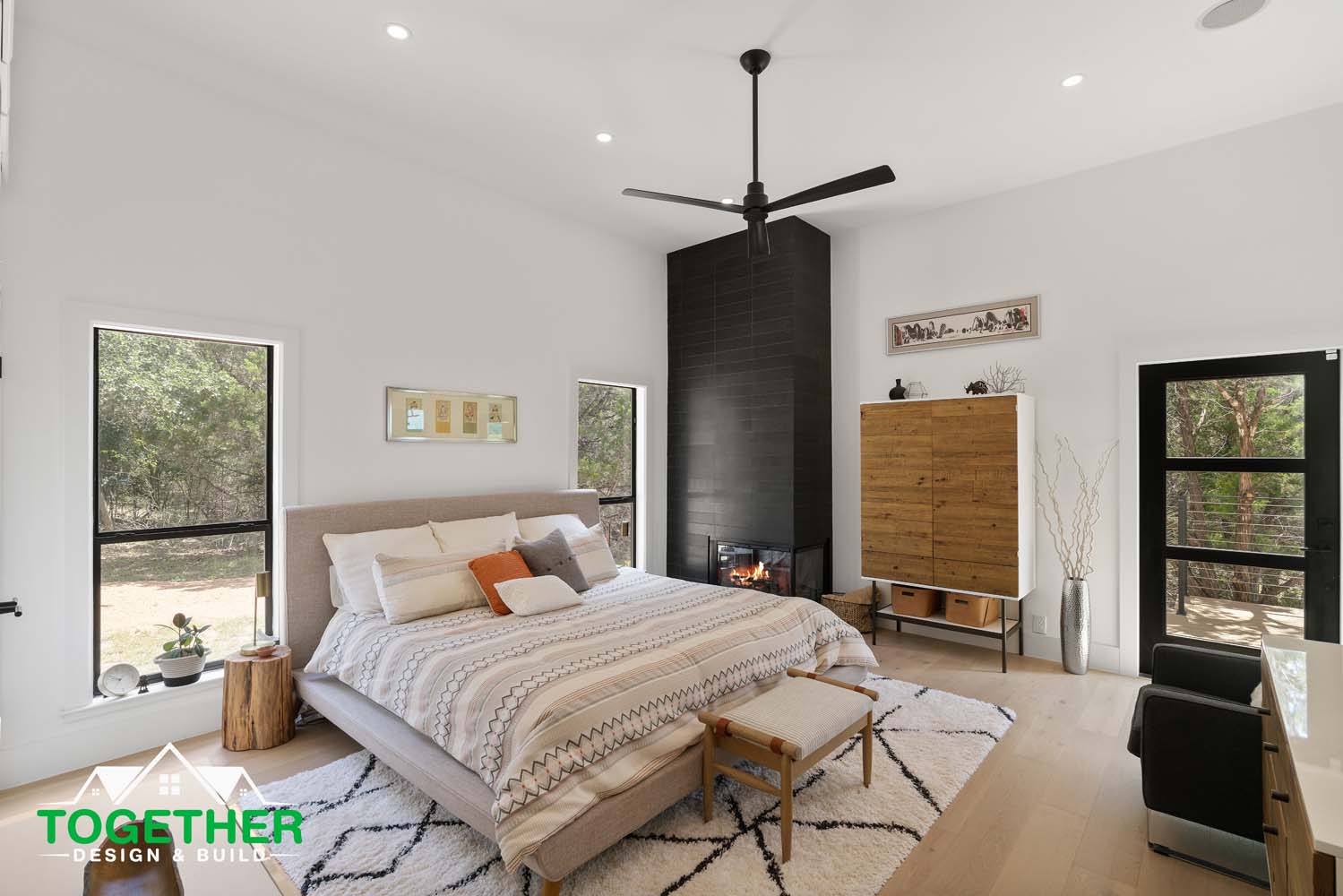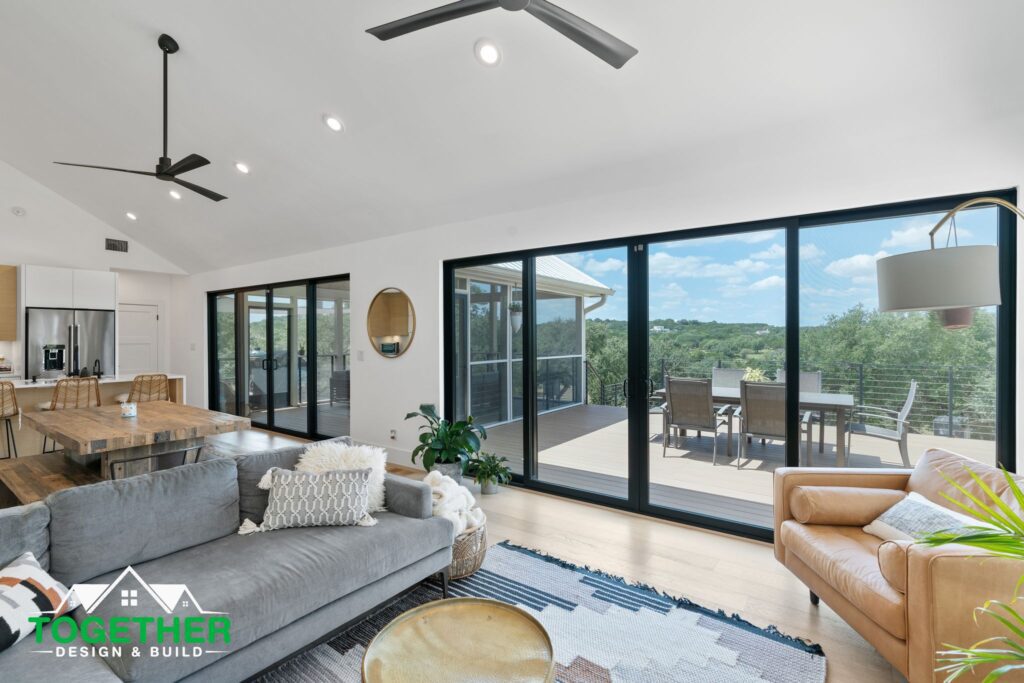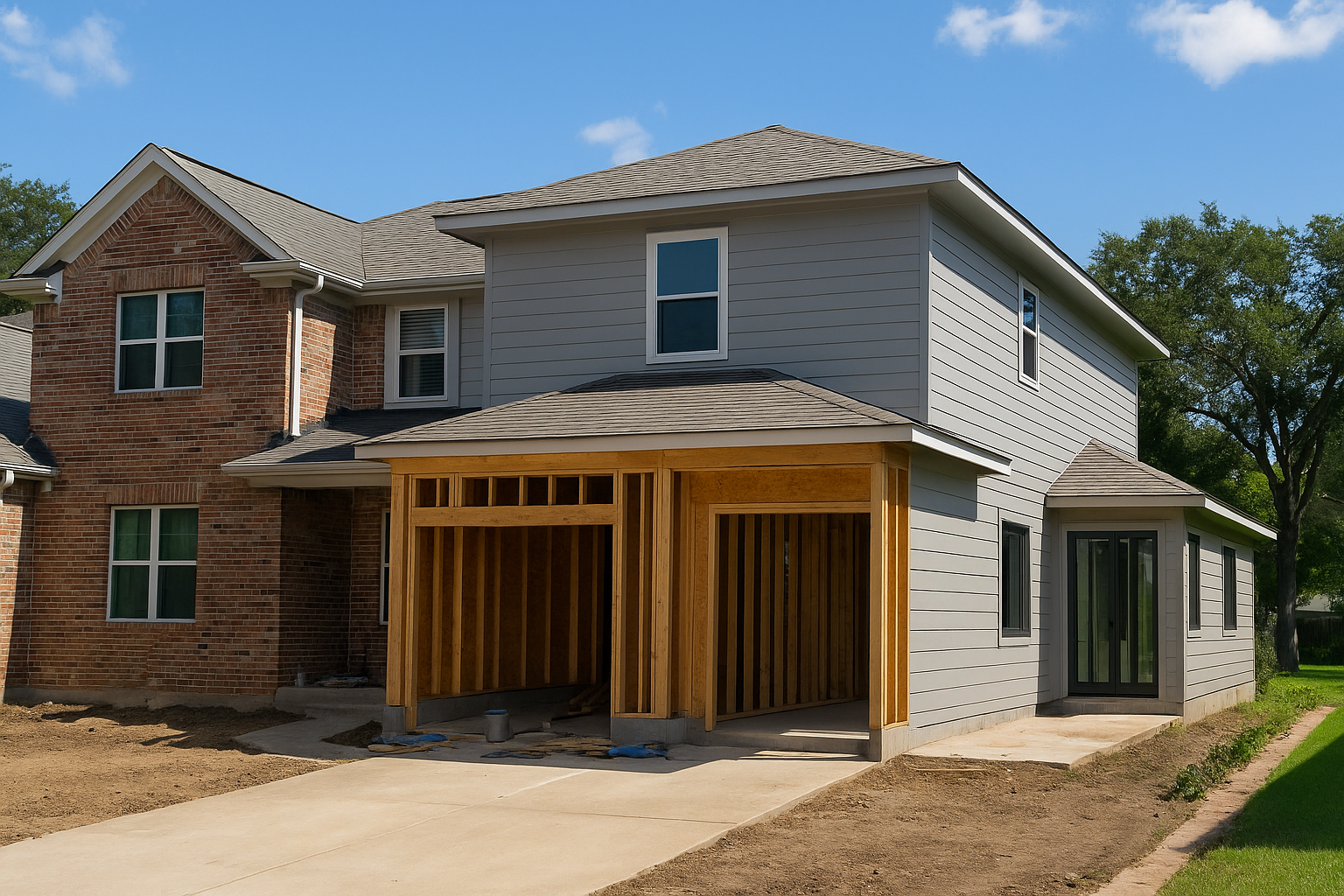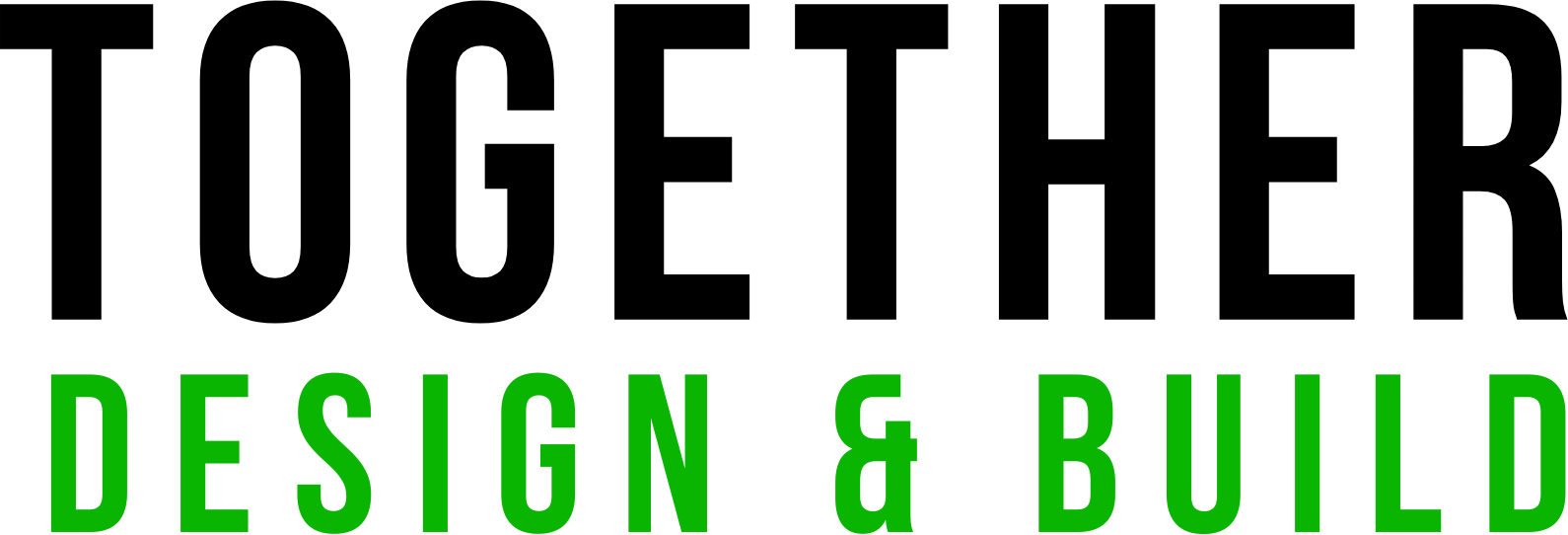Need more space but not sure whether to expand outward or upward? Austin and Dallas homeowners facing this decision often wonder which type of addition will give them the best return on investment. Understanding the difference between room additions and home additions—and their respective value propositions—can help you make the smartest choice for your family and your wallet.
A room addition involves adding a single new room or space to your existing home structure. This typically includes:
Long-term Investment Benefits While home additions may have lower immediate ROI, they offer:
Budget Range by Addition Type:

Quick Answer: Value Comparison
Room Addition ROI: 50-80% return on investment Home Addition ROI: 40-65% return on investment However, the “best” choice depends on your specific needs, property constraints, local zoning laws, and long-term plans. Let’s explore both options in detail.Understanding the Difference: Room Addition vs. Home Addition
 What Is a Room Addition?
What Is a Room Addition?
A room addition involves adding a single new room or space to your existing home structure. This typically includes:
- Master bedroom suite additions
- Home office or study additions
- Sunroom or family room additions
- In-law suite or guest room additions
- Expanded kitchen or dining areas
What Is a Home Addition?
A home addition involves adding multiple rooms or an entire new section to your house. This can include:- Second-story additions
- Wing additions (entire new sections)
- Garage conversions with additional space
- Multi-room additions (kitchen + dining + family room)
- ADU (Accessory Dwelling Unit) additions
Value Analysis: Which Adds More Worth?
Room Addition Value Factors
Higher ROI PotentialSingle room additions typically offer better return on investment because:- Lower cost per square foot compared to full home additions
- Faster completion time means less disruption and carrying costs
- Targeted improvements address specific needs efficiently
- Less risk of over-improving for your neighborhood
- Master bedroom suites: 60-80% ROI
- Home offices: 50-70% ROI (especially post-pandemic)
- Additional bathrooms: 60-75% ROI
- Family rooms: 50-65% ROI
 Home Addition Value Factors
Home Addition Value Factors
Long-term Investment Benefits While home additions may have lower immediate ROI, they offer:
- Dramatic increase in living space
- Potential for highest total value increase
- Better integration with existing home design
- Greater flexibility for future needs
- Second-story additions: 40-60% ROI
- Kitchen + dining expansions: 50-65% ROI
- Multi-purpose wing additions: 45-60% ROI
- In-law suites/ADUs: 55-70% ROI (in appropriate markets)
Cost Comparison: What to Expect in Austin & Dallas
Room Addition Costs
Budget Range by Room Type:- Basic bedroom addition: $15,000-$35,000
- Master suite with bathroom: $25,000-$60,000
- Home office addition: $20,000-$45,000
- Sunroom addition: $15,000-$40,000
- Family room addition: $25,000-$55,000
- Foundation requirements (slab vs. full foundation)
- Roof complexity and integration
- Electrical and plumbing needs
- Permitting costs in Austin/Dallas
- Site preparation and access
 Home Addition Costs
Home Addition Costs
Budget Range by Addition Type:
- Second-story addition: $100,000-$300,000+
- Single-story wing addition: $75,000-$200,000
- Kitchen/dining expansion: $50,000-$150,000
- ADU construction: $80,000-$250,000
- Garage conversion + addition: $40,000-$100,000
- Structural engineering requirements
- Foundation and framing complexity
- HVAC system expansion or replacement
- Architectural design fees
- Extended construction timeline
Local Market Considerations: Austin vs. Dallas
Austin Market Factors
Zoning and Regulations:- ADU-friendly policies make certain additions more valuable
- Historic district restrictions in central Austin neighborhoods
- Impervious cover limits may restrict addition size
- Tree preservation ordinances can affect placement
- High property values support higher addition investments
- Tech worker influx increases demand for home offices
- Walkable neighborhoods make expanding existing homes attractive
- Limited lot sizes often favor upward expansion
Dallas Market Factors
Regional Considerations:- Larger lot sizes in many areas allow for easier expansion
- Different municipal requirements across DFW metroplex
- Corporate relocation trends driving family-focused additions
- Suburban market preferences for single-story living
- Strong job market supports home improvement investments
- Growing population increases long-term property values
- Diverse neighborhoods with varying addition potential
 Decision Framework: Which Is Right for You?
Decision Framework: Which Is Right for You?
Choose Room Addition When:
Your Needs Are Specific:- You need one particular type of space
- Budget is a primary concern
- Timeline is important (faster completion)
- You want to minimize disruption to daily life
- You have adequate yard space for expansion
- Existing home structure can support addition
- Local zoning allows single-room additions
- Neighbors have similar sized homes
- You want higher ROI potential
- You prefer lower upfront investment
- You’re planning to sell within 5-10 years
Choose Home Addition When:
Your Needs Are Comprehensive:- You need multiple types of additional space
- You want to dramatically change your home’s layout
- You’re planning major renovations anyway
- You need better integration with existing spaces
- Limited yard space requires vertical expansion
- Existing home layout is problematic
- You want to maximize square footage increase
- Long-term family growth is anticipated
- You’re planning to stay long-term (10+ years)
- You want maximum total value increase
- You’re willing to invest significantly upfront
- Your neighborhood supports larger homes
Maximizing Value: Professional Design Strategies
Smart Addition Planning
Design for Integration:Successful additions look like original parts of the home:- Match existing architectural style and materials
- Ensure proper proportion to original structure
- Create logical traffic flow between spaces
- Maintain consistent ceiling heights and window styles
- Multi-purpose spaces offer better value than single-use rooms
- Storage solutions add practical value
- Natural light makes spaces feel larger and more valuable
- Quality finishes in key areas maximize impact
Avoiding Common Value-Killing Mistakes
Design Errors to Avoid:- Over-improving for your neighborhood
- Creating awkward layouts that feel disconnected
- Skimping on structural elements that cause future problems
- Ignoring local building codes and permit requirements
- Invest in quality foundation and structural work
- Prioritize mechanical systems (HVAC, electrical, plumbing)
- Choose mid-to-high quality finishes that appeal to buyers
- Don’t neglect exterior integration and curb appeal
The Role of Professional Design-Build Services
Benefits of Integrated Design and Construction
Streamlined Process: At Together Design & Build, our design-build approach offers several advantages:- 3D visualization helps you see value potential before construction
- Single point of responsibility reduces miscommunication
- Value engineering maximizes your investment return
- Coordinated timeline minimizes construction delays
- Understanding of local permit processes and requirements
- Knowledge of neighborhood value trends and buyer preferences
- Relationships with inspectors and municipal offices
- Familiarity with regional building challenges and solutions

Timeline Expectations for Each Option
Room Addition Timeline
- Design and permits: 2-4 weeks
- Construction: 3-8 weeks
- Total project time: 5-12 weeks
Home Addition Timeline
- Design and permits: 4-8 weeks
- Construction: 8-20 weeks
- Total project time: 12-28 weeks
Financing Considerations
Room Addition Financing Options
- Home equity loans or lines of credit
- Personal loans for smaller projects
- Cash-out refinancing in favorable rate environments
- Contractor financing for qualifying projects
Home Addition Financing Strategies
- Construction loans that convert to permanent mortgages
- Home equity loans for established equity
- Investment property loans for ADU projects
- Phased construction to spread costs over time
Return on Investment: Long-term Perspective
5-Year Value Outlook
Room Additions:- Immediate benefit from increased functionality
- Strong resale value in competitive markets
- Lower maintenance costs than major additions
- Easier to modify or update in the future
- Transformational impact on property value
- Potential for highest absolute value increase
- Greater long-term appreciation potential
- Enhanced marketability to larger buyer pool
Market Appreciation Factors
Both addition types benefit from:- Austin/Dallas population growth driving housing demand
- Limited housing inventory increasing existing home values
- Corporate relocations bringing high-income buyers
- Quality of life improvements making areas more desirable
Making Your Decision: Key Questions to Ask
Practical Considerations:
- How long do you plan to stay in your current home?
- What is your total budget for the project?
- How much disruption can your family handle?
- What are your specific space needs now and in 5 years?
- What do similar homes sell for in your neighborhood?
Professional Consultation Questions:
- What are the zoning restrictions for my property?
- How will this addition affect my property taxes?
- What permits are required and how long do they take?
- How will this integrate with my existing home systems?
- What’s the realistic timeline and potential obstacles?



